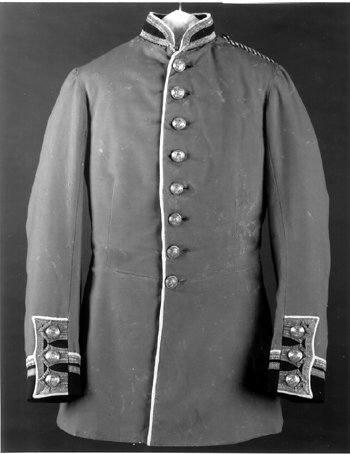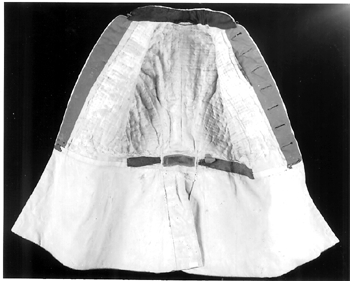CONSERVATION OF A MILITARY TUNIC INCLUDING THE USE OF GUIDE THREADS FOR POSITIONING REPAIRSJAN VUORI, & ROBIN HANSON
5 5. CONCLUSIONSThe conservation treatment of this extensively damaged military tunic consisted of physically stabilizing it to the extent that now, with care, it can be safely handled for study or displayed on a support or mannequin (figs. 11, 12). Missing portions were reconstructed so that the artifact now provides a more complete and accurate example of a military tunic of its time period. Repairs to the collar, neckline, and PL side front enable the tunic to hang properly. However, these areas must still be considered weak, and therefore vertical display should be of limited duration.
Following standard practice, repair fabrics were positioned taking advantage of existing holes wherever possible. The use of guide threads greatly facilitated the insertion and positioning of the new lining. They also enabled patches to be correctly positioned in areas that were inaccessible from below without interfering with original stitching. It is hoped that these techniques will be of use to other conservators in the treatment of similar costume artifacts. |

